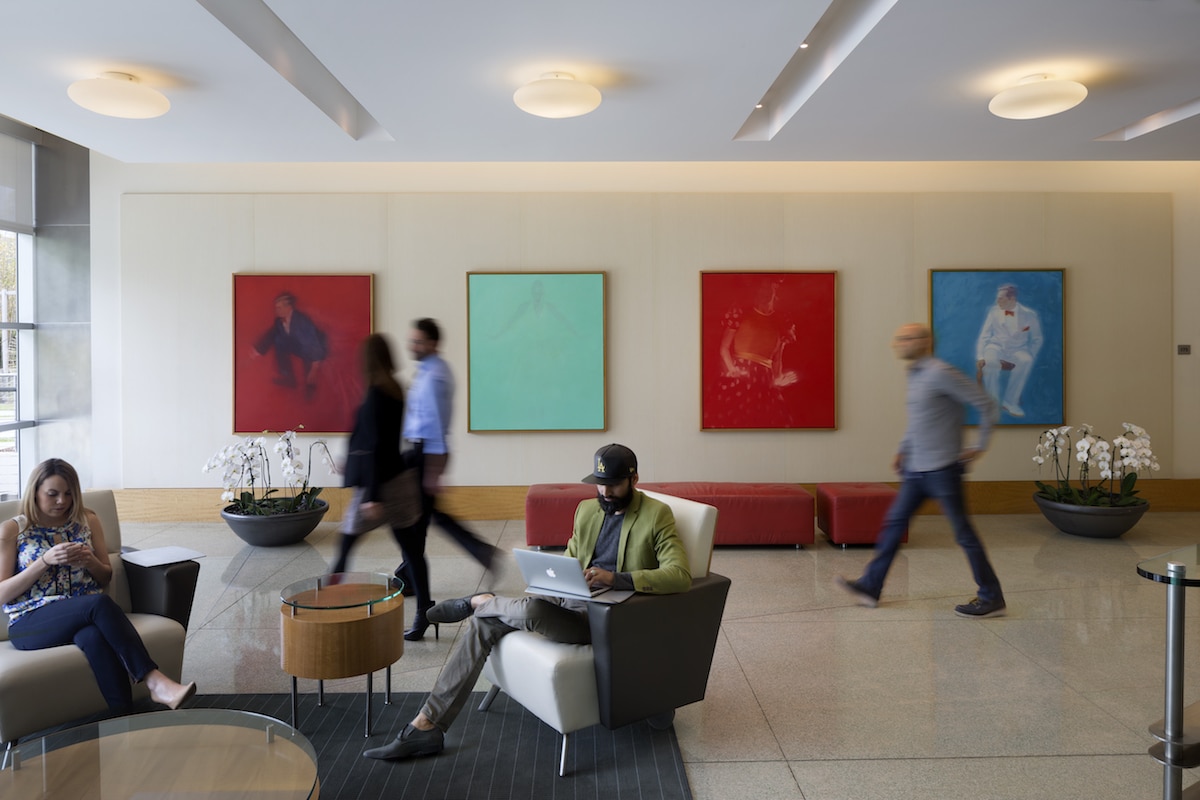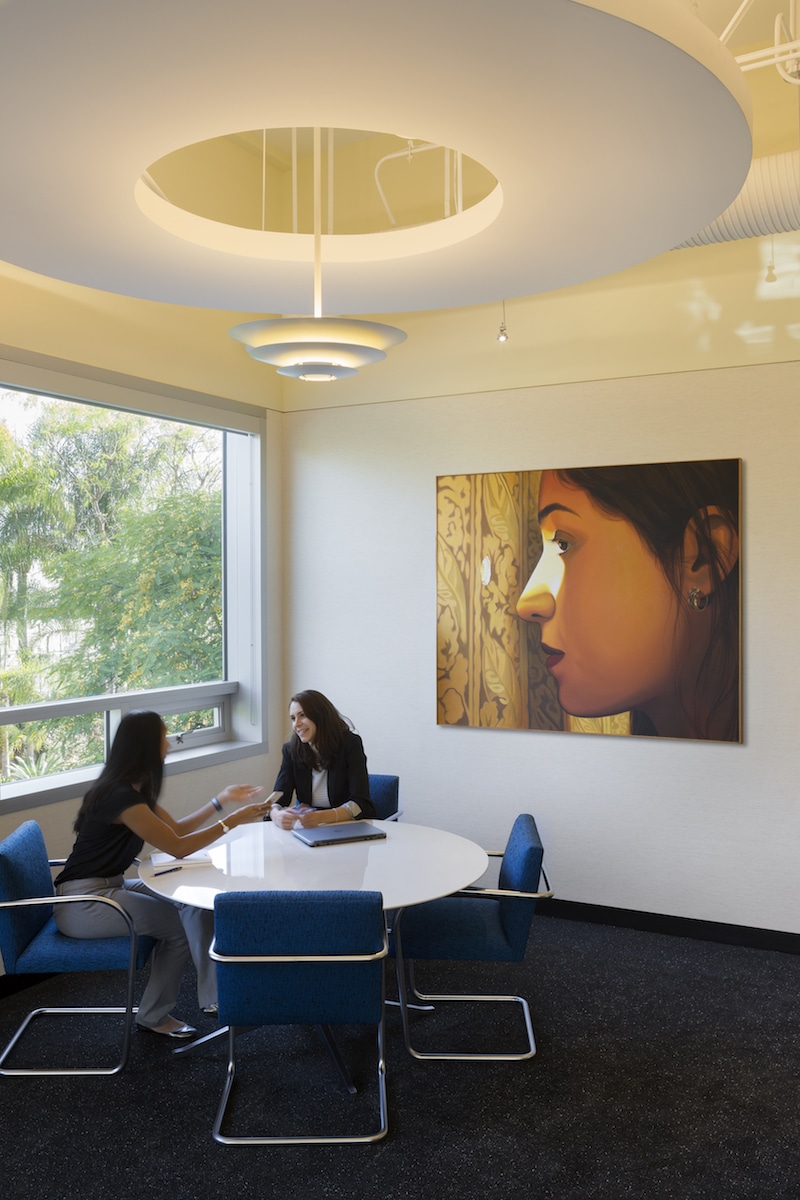
The Center for Active Design’s Joanna Frank shares the importance of incorporating health and wellness into workplace design. [Photo: Courtesy of Center for Active Design]
“It’s the everyday projects that have the greatest potential.”
Joanna Frank is the president and CEO of the Center for Active Design (CAD), an organization that translates public health research into practical design strategies for the built environment.
“This is knowledge that has been garnered for years, and we feel it’s our responsibility to make it as accessible as possible,” she says. Frank and her team are transforming the building industry to support healthier and happier communities.

[Photo: Courtesy of Kilroy Realty Corporation]
gb&d: What makes a healthy workplace?
Frank: Promoting health in the workplace starts with where it is located. If it’s in a highly walkable neighborhood with access to public transit, well maintained outdoor spaces, and nature, all of those impact employee health. The space between public and private—the design of the sidewalk and how the entry area connects back to the neighborhood—is an important aspect of equity and community health. Making outdoor spaces restorative and social, by building a community garden for example, offers physical and mental benefits.
And then there are design strategies for the indoor environment—like making it tobacco-free, monitoring air quality, and minimizing noise pollution. It’s important that employees are able to see nature, can stand up periodically while working, and have access to shared spaces.
gb&d: How has workplace culture changed over the last five years?
Frank: We have seen a complete shift in demand for workplaces that prioritize quality of life. Five years ago we were taking a top-down approach to health-promoting design, looking at it from the policy and city level. Individuals were less aware that the design of where they worked and lived was having an impact on their health. Now there is much greater understanding, so employees are demanding more of their employers.
SEE ALSO: The Next Phase of Sustainability Shifts to Wellness Design

[Photo: Courtesy of Kilroy Realty Corporation]
gb&d: How does CAD’s new building certification, Fitwel, address this demand?
Frank: It is important that the health-promoting design strategies implemented are empirically shown to be effective. That’s why Fitwel has been so popular. Employers want to promote the health of their employees in a holistic and measurable way.
The Fitwel certification is supported by more than 3,000 published research studies. This wealth of knowledge is translated into design strategies that address one or more of seven outcome categories: community health, reduced morbidity, social equity, well-being, healthy food, safety, and increased physical activity.
The model is not one size fits all. Different strategies can be applied to different properties depending on the context. For example, a suburban property might not be in a walkable neighborhood, but it probably has more square feet per employee than an urban property, so there can be gym spaces and quiet spaces within the actual footprint of the building. That’s just as legitimate and health-promoting as a smaller urban property that is in a highly walkable neighborhood. Design needs to reflect the unique needs of the people that it’s serving and it’s exciting to be able to codify that.
gb&d: What is one design choice that would make for a happier and healthier workplace?
Frank: Stairwells. If you enter a building and immediately see a well-designed stairwell, you’re many times more likely to go up those stairs. And just six flights of stairs a day is enough to offset the annual average weight gain of an American. So this is the kind of small change that has a big impact on a person’s overall health.
But there are strategies at every level. Some are very simple, like putting up hand-washing signs in the bathroom, and others are much more capital intensive.

[Photo: Courtesy of Kilroy Realty Corporation]
gb&d: Why is workplace wellness important to you?
Frank: I think it’s possible to address and reverse global health trends using our built environment. The belief that we can make a difference is something that inspires me. We want this to be available to as many people as possible and bring about market transformation. We’re not as interested in just having one or two great projects; we are committed to raising the bar because health is something that impacts everybody.
gb&d: What’s next for CAD?
Frank: We are coming out with a new set of civic design guidelines called Assembly. Assembly marks the next chapter for us, looking at social health. We are thinking about building trust between neighbors and stewardship of the public realm. There are cues in our built environment that impact our behavior, like whether or not we pick up litter.
For the last four years we have been working with communities across the country, researching the relationship between design and social health. We will be publishing that this summer.
